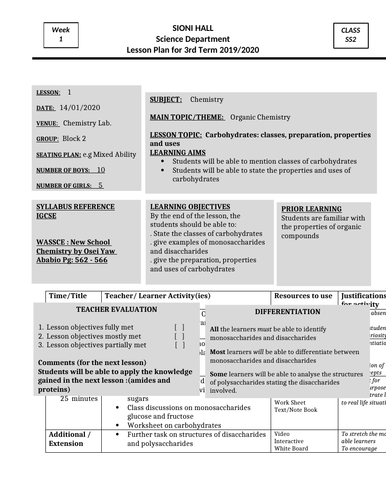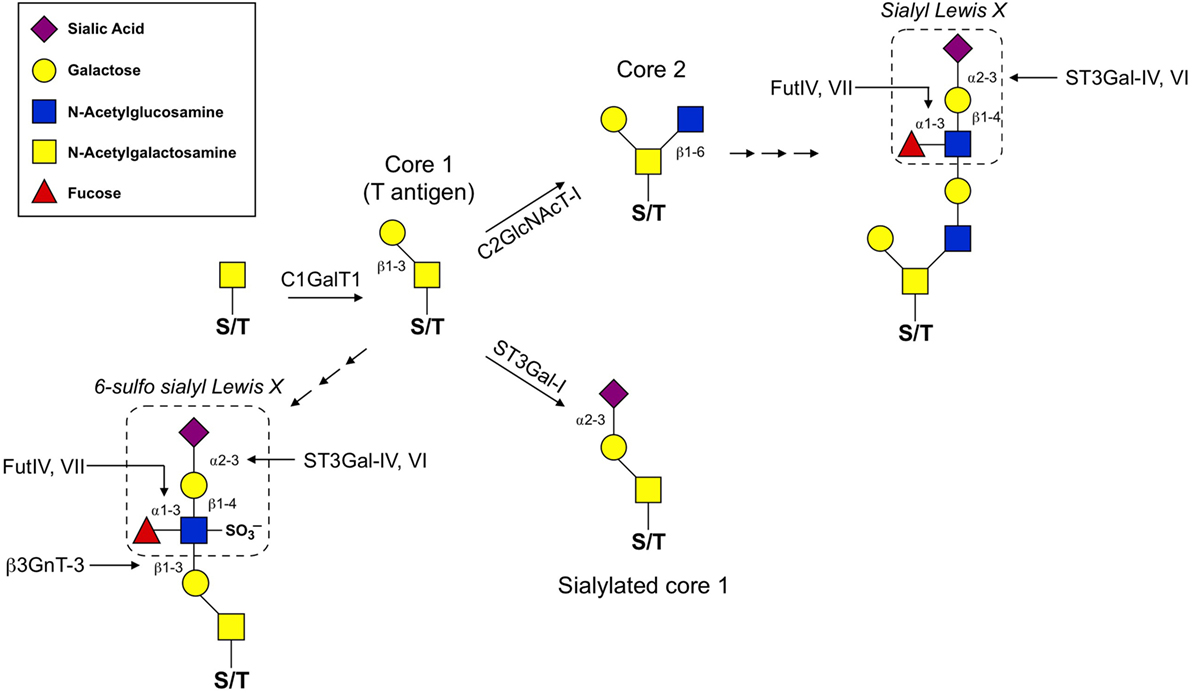Introduction to Complex Carbohydrates
Introduction to Complex Carbohydrates

Lesson Objectives
- Describe the basic types of carbohydrates and glycoconjugates of physiologic and clinical significance.
- Explain the functions of carbohydrates.
- Discuss the biosynthesis of N-linked and O-linked glycans on glycoproteins.
- Relate how deficiencies in breakdown or biosynthesis of carbohydrates can result in disease.

Carbohydrates and Glycoconjugates of Physiologic and Clinical Significance
Basic Types of Carbohydrates
Carbohydrates are divided into several categories based on their structure:
- Monosaccharides: The simplest form of carbohydrates, consisting of a single sugar molecule (e.g., glucose, fructose, galactose).
- Disaccharides: Consist of two monosaccharide units linked together (e.g., lactose, sucrose).
- Polysaccharides: Long chains of monosaccharide units (e.g., glycogen, starch).

Glycoconjugates
Glycoconjugates are carbohydrates that are covalently linked to other types of molecules. They include:
- Glycoproteins: Proteins that have carbohydrate chains covalently attached.
- Proteoglycans: A subclass of glycoproteins where the carbohydrates are glycosaminoglycans (GAGs).

Functions of Carbohydrates
Carbohydrates play several crucial roles in biological systems:
- Energy Source: Glucose is a key energy source for cells.
- Structural Components: Cellulose in plants and chitin in arthropods provide structural support.
- Cell Recognition and Signaling: Glycoproteins and glycolipids on cell surfaces are involved in cell-cell recognition and signaling.

Biosynthesis of N-linked and O-linked Glycans on Glycoproteins
N-linked Glycans
N-linked glycans are synthesized in the rough endoplasmic reticulum (ER) and Golgi apparatus. The process involves:
- Assembly of a precursor oligosaccharide on a lipid carrier.
- Transfer of the oligosaccharide to an asparagine residue of the nascent protein.
- Processing and modification in the Golgi apparatus.

O-linked Glycans
O-linked glycans are assembled directly on serine or threonine residues of the protein in the Golgi apparatus:
- Sequential addition of monosaccharide units.
- Extensive modification and diversification of the oligosaccharide chains.

Carbohydrate-Related Diseases
Deficiencies in Breakdown or Biosynthesis
Deficiencies in carbohydrate metabolism or biosynthesis can lead to various diseases:
- Lactose Intolerance: Deficiency in lactase enzyme, leading to inability to digest lactose.
- Chondrodystrophies: Defects in cartilage development due to improper synthesis or breakdown of GAGs.
- Mucopolysaccharidoses: Caused by deficiencies in enzymes needed to degrade GAGs. Examples:
- Hunter Syndrome: X-linked recessive disorder due to iduronate-2-sulfatase deficiency.
- Hurler Syndrome: Autosomal recessive disorder due to alpha-L-iduronidase deficiency.

Clinical Importance of Common Sugars and Structures
Monosaccharides
- Glucose: Primary energy source; dysregulation is involved in diabetes.
- Lactose: Found in milk; deficiency in lactase leads to lactose intolerance.
- Chondroitin Sulfate: A major component of cartilage; defects lead to chondrodystrophies.
- Heparin: An anticoagulant; critical in preventing blood clots.

Enzymes and Proteins Associated with Carbohydrate Metabolism
Students should be able to identify specific enzymes or proteins that are deficient in particular diseases, such as:
- Lactose Intolerance: Lack of lactase enzyme.
- Chondrodystrophies and mucopolysaccharidoses: Deficiencies in enzymes involved in GAG metabolism.

Significance of HbA1c in Diabetes
- Non-enzymatic Glycation: Occurs when glucose binds to proteins without the aid of enzymes, leading to advanced glycation end-products (AGEs).
- HbA1c: Hemoglobin A1c is a form of glycated hemoglobin used to measure average blood glucose levels over the past 2-3 months, crucial for managing diabetes.